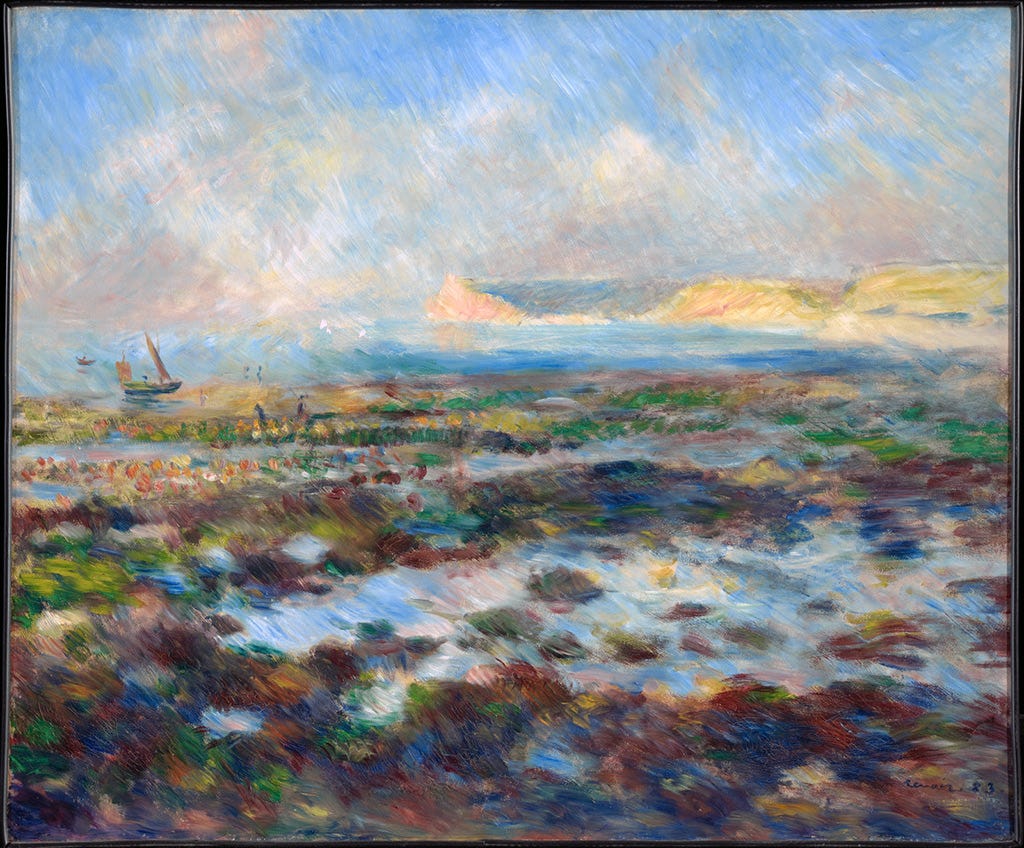Pierre-Auguste Renoir, born in 1841 in Limoges and deceased in 1919 in Cagnes-sur-Mer, was one of the leading figures of the Impressionist movement in France. His work is distinguished by fluid and luminous brushwork, a refined use of color, and a sensual approach to the human form. In his youth, he trained as a porcelain painter before enrolling at the École des Beaux-Arts and studying in the studio of Charles Gleyre, where he met Claude Monet, Alfred Sisley, and Frédéric Bazille. Together, they sought to revolutionize painting.
Early in his career, Renoir faced financial struggles and had difficulty gaining recognition. Nevertheless, he participated in the first Impressionist exhibition in 1874, where his work, particularly La Loge, attracted attention. His style evolved rapidly—he was inspired by Monet’s use of light and spontaneity while developing a more intimate and warm approach that emphasized the human figure. His works from this period, such as Luncheon of the Boating Party and Bal du moulin de la Galette, are iconic of Impressionism and reflect his fascination with Parisian life and the pleasures of everyday existence.
By the late 1880s, Renoir began moving away from pure Impressionism, seeking greater structure and solidity in his compositions. Influenced by the classical masters, particularly Raphael and Ingres, he adopted a more precise and disciplined style, often referred to as his “Ingresque” period. His figures became more sculptural, and he focused increasingly on nudes, family portraits, and scenes of maternal tenderness, as seen in The Bathers and Girls at the Piano.
Despite suffering from severe rheumatoid arthritis in his later years, which deformed his hands and greatly limited his mobility, Renoir continued to paint, adapting his technique by having brushes strapped to his fingers. His later works retained their characteristic warmth and sensuality, demonstrating his lifelong devotion to beauty and harmony. He also explored sculpture with the assistance of Richard Guino, a young artist who helped bring his designs into three-dimensional form.
Renoir’s influence extended beyond his lifetime, shaping the course of modern art. His commitment to capturing joy, light, and movement in everyday life remains one of the most enduring legacies of Impressionism.
Click here to read the (very) full bio of Pierre-Auguste Renoir on Wikipedia.
NOTE: To our knowledge, Renoir never painted in Fecamp itself, instead he painted in the nearby village of Yport (a suburb of Fecamp).
Yport
Yport (population: 850), a small fishing village (with no harbour), lies close to Fecamp on the South-West alongside the coast. Today it’s a seaside resort village with a casino, restaurants and hotels.
These were all the paintings we could find that he made near Fecamp, Normandy.








